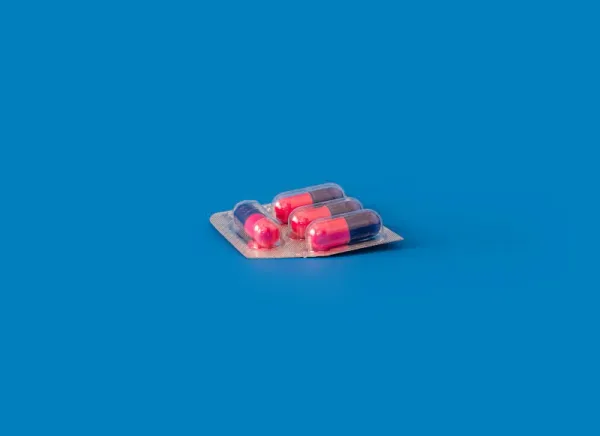A new GLP1: Retatrutide
Is mimicking more hormones better? Let's find out -- the new GLP1 drug Retatrutide is a *triple* receptor agonist

Drugs based on Semaglutide like Ozempic, Wegovy and Saxenda are single GLP1 Receptor Agonists – this means they mimic one hormone (GLP1, which naturally occurs) in the body.
Check out our quick explainer
By mimicking GLP1, these drugs are "receptor agonists" which means they fit where GLP1 would have fit, and cause similar effects to GLP1, primarily:
- Feeling fuller longer
- Less thoughts of food/hunger in the brain
- Better regulation of blood sugar (stimulating insulin production)
Tirzepatide (Mounjaro, Zepbound) is a "dual agonist"
Drugs like Tirzepatide (Mounjaro, Zepbound) are dual agonists – they target both GLP1 and a hormone called GIP which both have similar effects in the
Tirzepatide is seemingly more effective than semaglutide, but we can't be sure if that's because of simply targeting more hormones. But don't take our word for it:

This trial is seemingly pretty robust (40 week, Phase 3, 1879 patients), and they reached a conclusion that is pretty clear cut:
Conclusions: In patients with type 2 diabetes, tirzepatide was noninferior and superior to semaglutide with respect to the mean change in the glycated hemoglobin level from baseline to 40 weeks.
That said, of course the study was funded by Eli Lilly (which produces Tirzepatide) so scrutiny is deserved.
It's dangerous to assume from only this that influencing more receptors is obviously better, but...
Retatrutide is a "triple agonist"
Retatrutide, a new drug is a "triple agonist":

To cut to the chase here:
It [Retatrutide] is a triple hormone receptor agonist of GLP-1, GIP, and GCGR receptors.
So what's this new receptor that we're agonizing? The GCGR receptor is another Glucagon receptor that stimulates the production of something called cAmp (Cyclic adenosine monophosphate).
While it would likely take four years or more to get up to speed on the current understanding of how GCGR interacts with the body, the general idea is that it affects the body in a similar way to GLP1 and GIP – meaning it causes effects relevant to insulin production, reduction of food noise in the brain, and eventually (hopefully) weight loss.
Trials for Retatrutide
One trial for Retatrutide has made it to Phase 2 and has been published in the New England Journal of medicine:

While the study is small (only 338 participants), the results are quite substantial:
| Group | Body Weight at 24 Weeks | Body Weight at 48 Weeks |
|---|
| 1-mg Retatrutide | -7.2% | -8.7% |
| Combined 4-mg Retatrutide | -12.9% | -17.1% |
| Combined 8-mg Retatrutide | -17.3% | -22.8% |
| 12-mg Retatrutide | -17.5% | -24.2% |
| Placebo | -1.6% | -2.1% |
Clearly, Retatrutide was effective on this cohort.
The results speak for themselves, and if Retatrutide continues to show promise in further trials and is approved by the FDA, it could become a really exciting new GLP1.
Are there new negative side effects?
In the study, there were a couple new negative side effects that happened rarely and did not seem to be huge but are worth mentioning.
Heart rate increase
The heart rate increased in a dose-dependent manner with retatrutide up to 24 weeks and then declined thereafter (Tables S6 and S8 and Fig. S10). Reported cardiac arrhythmias were mild to moderate in severity with the exception of one severe adverse event (prolonged QT syndrome) in a participant treated with ondansetron (Table S13)
Depending on the dose, there were some increases in heart rate that were observed in the first 24 weeks.
While it's not clear that Retatrutide caused the heart rate increase versus something else, the dose-dependent nature of the heart rate increase does point to some correlation.
Skin sensitivity
Skin sensitivity was also reported – only 1% of the people in the placebo group versus 7% in the placebo:
Subcutaneous hyperesthesia and skin sensitivity adverse events were reported in 7% of the participants who received retatrutide and 1% of those who received placebo (Table 3 and Table S14). None of these events were severe or serious or were associated with overt skin findings, and none led to discontinuation of retatrutide or placebo
While 7% is a relatively small percent of participants (and the causes could be elsewhere), the fact that placebo saw 1% makes this worth mentioning – a "7 fold increase" sounds much more serious than 7%.
Expected negative side effects
Other than the ones above, the most serious side-effects were well known – the usual gastro-intestinal (gastroparesis, etc) side effects and others.
We wrote a guide you can check out.
Who makes Retatrutide?
Retatrutide is produced by Eli Lilly – the American pharmaceutical giant that makes Mounjaro and Zepbound.

Eli Lilly has been in the pharmaceutical industry for a long time, racking up many "hits":
- Prozac (clinical depression)
- Cymbalta
- Zyprexa (anti-psychotic)
- Humalog (Insulin)
- Trulicity (GLP1 - Dulaglutide)
Eli Lilly is a public company and is thus responsible to share holders (for better or for worse) along with American regulators, so it's relatively trusted, and generally has a high quality bar – it's not known for quality issues.






